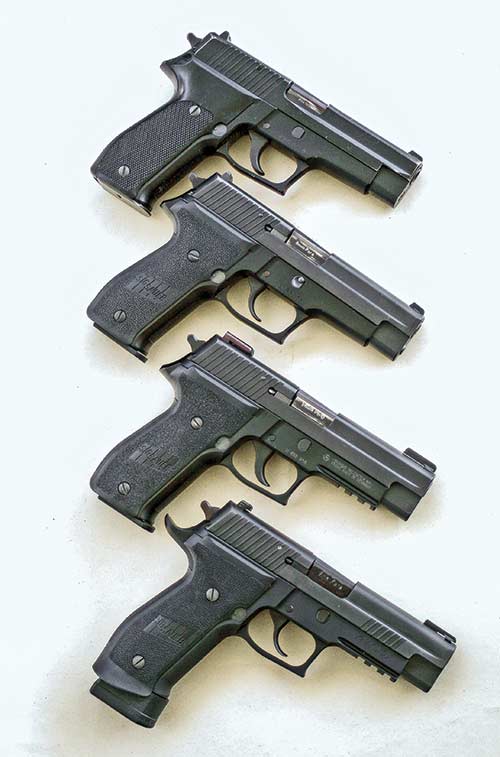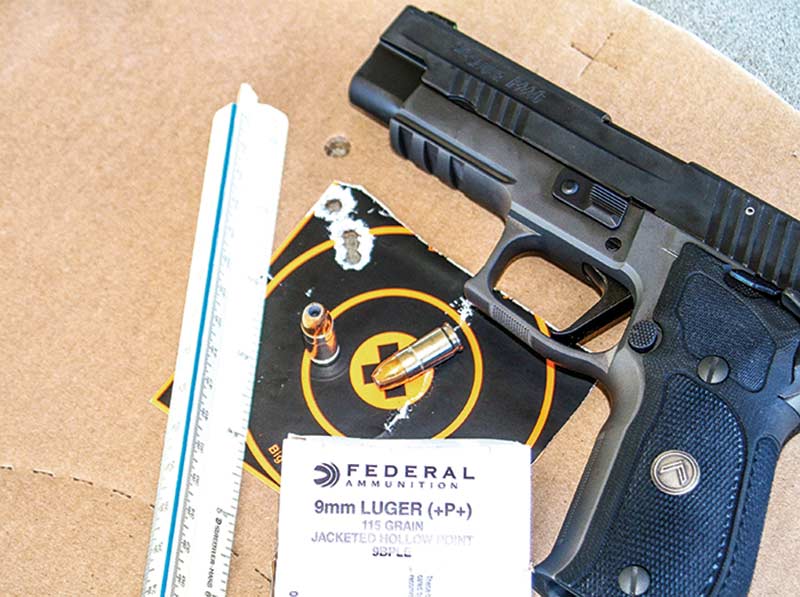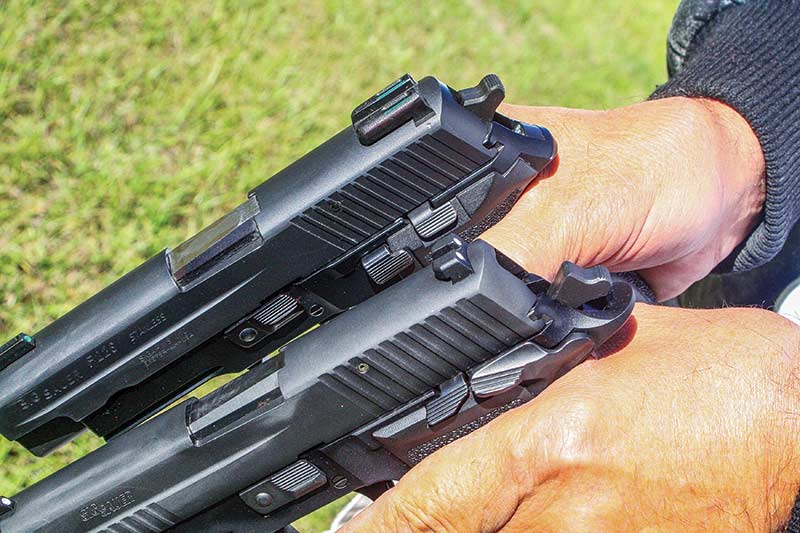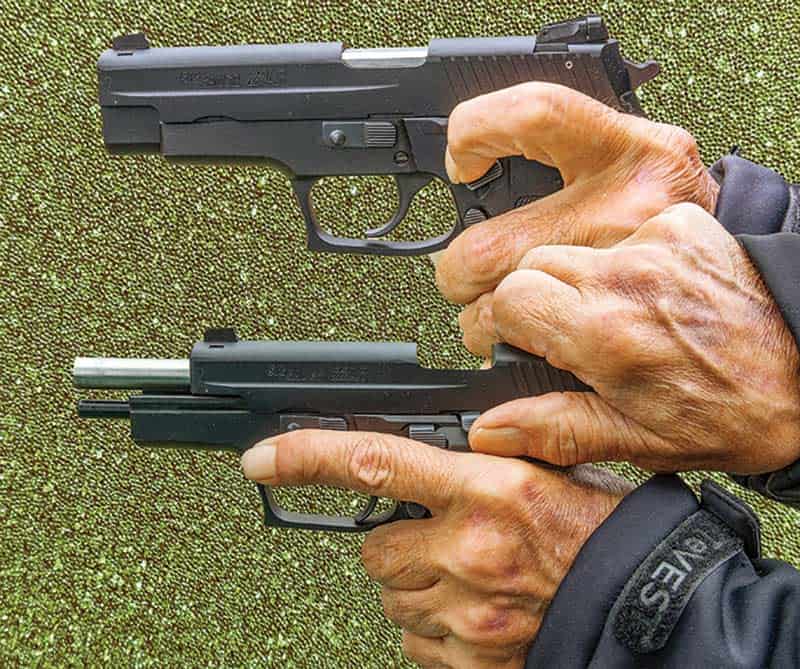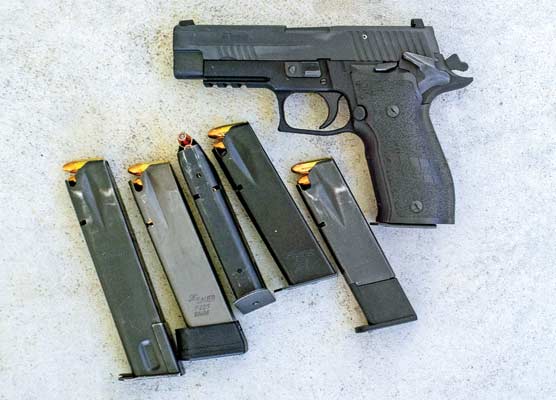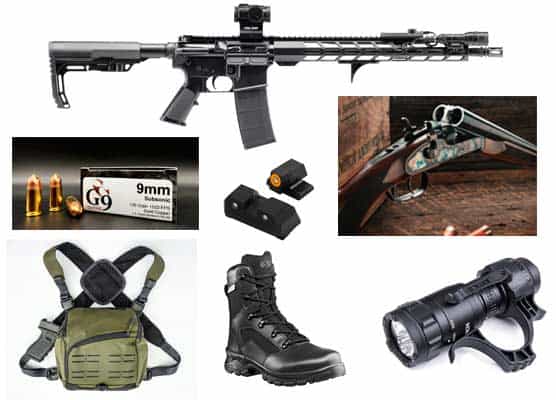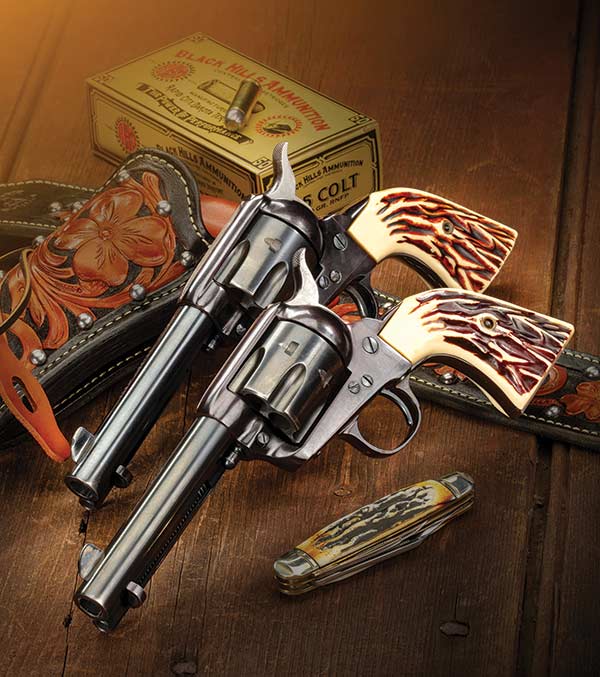Four Decades With the SIG P226
One of the Genre-Defining CCW Pistols
2024 marked the 40th year of the SIG SAUER P226 pistol. A traditional double-action (TDA) with a long DA pull for the first shot and short single action pull for subsequent self-cocked rounds, it was followed by a couple of double-action-only (DAO) variations and even single action only (SAO) cocked and locked versions with ambidextrous thumb safety. The 9mm was its first chambering, and by far its most popular, but it was also made in .40 S&W and .357 SIG, and there was even a very functional .22 Long Rifle conversion unit for it produced by SIG.
Being a gun writer, I got early access to the P226 and immediately learned to appreciate it. I taught classes with it. I carried one for a while on police duty in the 1980s and more often on my own time over the decades. I shot matches with it and taught the instructors of police departments that had adopted it. And, perhaps more importantly, watched many of my trainees in Lethal Force Institute and Massad Ayoob Group courses shooting them fast and furious for hundreds of rounds apiece. Wrote two editions of the Gun Digest Book of SIG SAUER.
P226s worked great then. They still work great now. Here’s why.
Evolution
When problems showed up with the P226, SIG fixed them. Back in the ’80s, I cracked the aluminum frames of two P226 pistols with heavy use of 115-grain bullets at the +P+ velocities of 1,350 feet per second or so. The company replaced both, and in the ’90s when the P226 was upgraded for the ferocious slide velocities generated by .40 S&W and .357 SIG, the problem went away.
When police departments were leery of pistols with light trigger pulls after the first shot was fired, SIG offered double-action-only versions. The first, approved by NYPD and still found on the streets of the Big Apple, was heavy as hell and — in my opinion and several others — suboptimal. The DAK (Double-Action Kellerman, named after its designer) proved much better. In the 2000s, SIG made its single-action-only versions with very sweet trigger pulls and the only thumb safeties ever catalogued for P226s.
Like most double-stack 9mms with double-action triggers, the reach for the finger to the trigger was long. SIG solved this a couple of ways. The most effective palliative was the option of the short-reach trigger. Another approach was the E2 grips, which solved one of my own SIG pet peeves — grip screws working loose and even falling out.
One complaint with the P226 was it was ill-suited to southpaws and I’ve always thought that was bunk. With the left hand, use the tip of the index finger, pointed down, and you’ll find the de-cocking lever easy to manipulate. No, you don’t have to change hands to lock the slide back if you’re a lefty. Just hold the grip-frame in your left hand, put the right hand on the slide with the right thumb level with the ejection port, and retract the slide. Your right thumb will be perfectly positioned to bring the slide lock lever up into place.
Ask the Person Who Owns One
The SIG SAUER P226 was widely adopted by law enforcement. Approved by our two largest municipal police departments (in the DAO version), NYPD and Chicago PD, and adopted by numerous state and city and county police departments. Gordon McNeill, the FBI supervisor who was shot and crippled when his revolver went dry in the infamous 1986 Miami shootout, bought a 16-shot P226 to carry when he returned to duty.
Between the full-size P226 and smaller pistols it spawned — the P228 9mm and the P229 in 9mm, .40, and .357 — adoptions included FBI, DEA, Secret Service, Air Marshal Service and many more. Today, in the time of striker-fired polymer guns, the early-adopting Orlando (FL) Police have only now transitioned to the SIG P320 from the P226 9mms that served them so well for decades. At this writing, the San Francisco Police still carry the .40 caliber P226.
The 226 is accurate. The ones I’ve tested in 9mm will do 1.25″–1.50″ five-shot groups at 25 yards with the best ammo, and I once shot a 1.0″ five-shot, 25-yard group with .357 SIG 125-grain Gold Dot from the bench.
The 226 is reliable. That’s why the SEAL teams insisted on keeping them for so long when the rest of the U.S. military had gone to something else.
Personally, I’m very comfortable with the SIG P226. I was carrying one under my suit jacket at a high point in my career, the evening in June of 1998 when I accepted the Outstanding American Handgunner of the Year award.
The SIG P226 endures. Go to SIGSAUER.com and you will see how many variations SIG SAUER is still producing. There are some very good reasons why people are still buying them as the P226 enters its fifth decade of manufacture.
